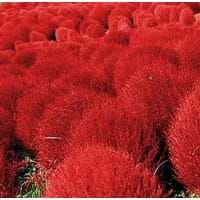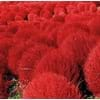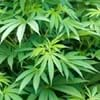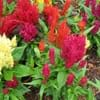Life Span
Annual
Perennial
Type
Ornamental Plants, Shrubs
Flowering Plants, Fruits, Trees
Origin
Eastern Europe, Western Asia
Central Asia
Types
Kochia Indica, Neokochia californica
Aceymac apple, Bailey Sweet apple, Dabinett apple, Nehou apple
Habitat
gardens, Temperate Regions
Hillside
USDA Hardiness Zone
3-11
5-8
Sunset Zone
A1, A2, A3, H1, H2, 1a, 1b, 2a, 2b, 3a, 3b, 4, 5, 6, 7, 8, 9, 10, 11, 12, 13, 14, 15, 16, 17, 18, 19, 20, 21, 22, 23, 24
A1, A2, A3, 8, 9, 10, 11, 12, 13, 14, 15, 16, 17, 18, 19, 20, 21, 22, 23, 24
Habit
Upright/Erect
Oval or Rounded
Flower Color
Not Available
White
Flower Color Modifier
Bicolor
Not Available
Fruit Color
Not Available
Green, Red
Leaf Color in Spring
Light Green
Dark Green
Leaf Color in Summer
Not Available
Green
Leaf Color in Fall
Gray Green, Burgundy, Crimson
Brown, Green, Light Yellow
Leaf Color in Winter
Light Green
Not Available
Sunlight
Full Sun
Full Sun, Partial shade
Type of Soil
Clay, Loam, Sand
Loamy
The pH of Soil
Acidic, Neutral, Alkaline
Neutral
Soil Drainage
Average
Well drained
Bloom Time
Summer
Fall, Summer
Tolerances
Drought
Drought
Where to Plant?
Ground
Ground
How to Plant?
Stem Cutting, Transplanting
Grafting, Seedlings, Transplanting
Plant Maintenance
Medium
Medium
Watering Requirements
occasional watering once established, Requires consistently moist soil
Medium
In Summer
Moderate
Lots of watering
In Spring
Moderate
Moderate
In Winter
Less Watering
Average Water
Soil Type
Well drained
Loamy
Soil Drainage Capacity
Loamy, Well drained
Well drained
Sun Exposure
Bright direct sunlight
Full Sun, Partial shade
Pruning
Pinch or prune as they grow to promote branching and bushiness, Remove dead branches
Prune when plant is dormant, Remove dead or diseased plant parts
Fertilizers
All-Purpose Liquid Fertilizer
All-Purpose Liquid Fertilizer
Pests and Diseases
Aphids, Mosquito
Aphids, Canker, Caterpillars, Powdery mildew, Root rot
Plant Tolerance
Heat Tolerance, Humidity
Drought
Flower Petal Number
Not Available
Single
Foliage Texture
Fine
Medium
Foliage Sheen
Matte
Matte
Attracts
Butterflies, Leaf Hoppers
Birds
Allergy
Eye irritation, Respiratory problems
Mouth itching, Throat itching
Aesthetic Uses
Beautification, Landscape Designing
Not Available
Beauty Benefits
For treating wrinkles, Making cosmetics, Removes dandruff, Skin cleanser
Not Available
Edible Uses
Sometimes
Yes
Environmental Uses
Provides ground cover
Air purification
Medicinal Uses
Diabetes, Hypotensive, Obesity
Cancer, constipation, Diabetes, Diarrhea, Dysentry, Fever, Heart problems, Tooth ache
Part of Plant Used
Leaves
Fruits
Other Uses
Cattle Fodder, Sauces, Traditional medicine, Used for fragrance, Wood log is used in making fences
Used As Food, Wood is used for making furniture
Used As Indoor Plant
No
No
Used As Outdoor Plant
Yes
Yes
Garden Design
Groundcover
Fruit / Fruit Tree, Shade Trees, Showy Tree
Botanical Name
BASSIA scoparia
Malus domestica
Common Name
Burningbush, Kochia
Apple Tree
In Hindi
Bassia scoparia
सेब का वृक्ष
In German
Besen-Radmelde
Apfelbaum
In French
Bassia scoparia
Pommier
In Spanish
Kochia scoparia
Manzano
In Greek
Bassia scoparia
μηλιά
In Portuguese
Bassia scoparia
Macieira
In Polish
Mietelnik żakula
jabłoń
In Latin
Bassia scoparia
Arbore
Phylum
Angiosperms
Magnoliophyta
Class
Magnoliopsida
Magnoliopsida
Order
Caryophyllales
Rosales
Family
Chenopodiaceae
Rosaceae
Clade
Angiosperms, Eudicots
Angiosperms, Eudicots, Rosids
Tribe
Not Available
Not Available
Subfamily
Camphorosmoideae
Not Available
Number of Species
Not Available
Not Available
Importance of Kochia and Apple Tree
Want to have the most appropriate plant for your garden? You might want to know the importance of Kochia and Apple Tree. Basically, these two plants vary in many aspects. Compare Kochia and Apple Tree as they differ in many characteristics such as their life, care, benefits, facts, etc. Every gardener must at least have the slightest clue about the plants he wants to plant in his garden. Compare their benefits, which differ in many ways like facts and uses. The medicinal use of Kochia is Diabetes, Hypotensive and Obesity whereas of Apple Tree is Cancer, constipation, Diabetes, Diarrhea, Dysentry, Fever, Heart problems and Tooth ache. Kochia has beauty benefits as follows: For treating wrinkles, Making cosmetics, Removes dandruff and Skin cleanser while Apple Tree has beauty benefits as follows: For treating wrinkles, Making cosmetics, Removes dandruff and Skin cleanser.
Compare Facts of Kochia vs Apple Tree
How to choose the best garden plant for your garden depending upon its facts? Here garden plant comparison will help you to solve this query. Compare the facts of Kochia vs Apple Tree and know which one to choose. As garden plants have benefits and other uses, allergy is also a major drawback of plants for some people. Allergic reactions of Kochia are Eye irritation and Respiratory problems whereas of Apple Tree have Mouth itching and Throat itching respectively. Having a fruit bearing plant in your garden can be a plus point of your garden. Kochia has no showy fruits and Apple Tree has showy fruits. Also Kochia is not flowering and Apple Tree is flowering. You can compare Kochia and Apple Tree facts and facts of other plants too.





